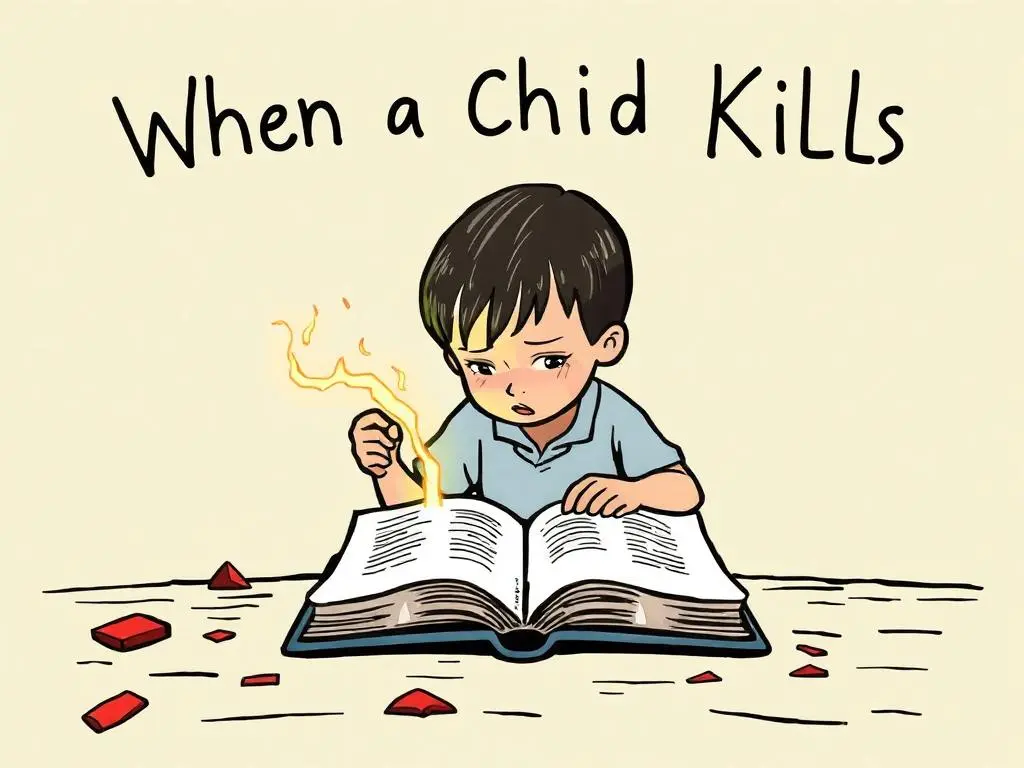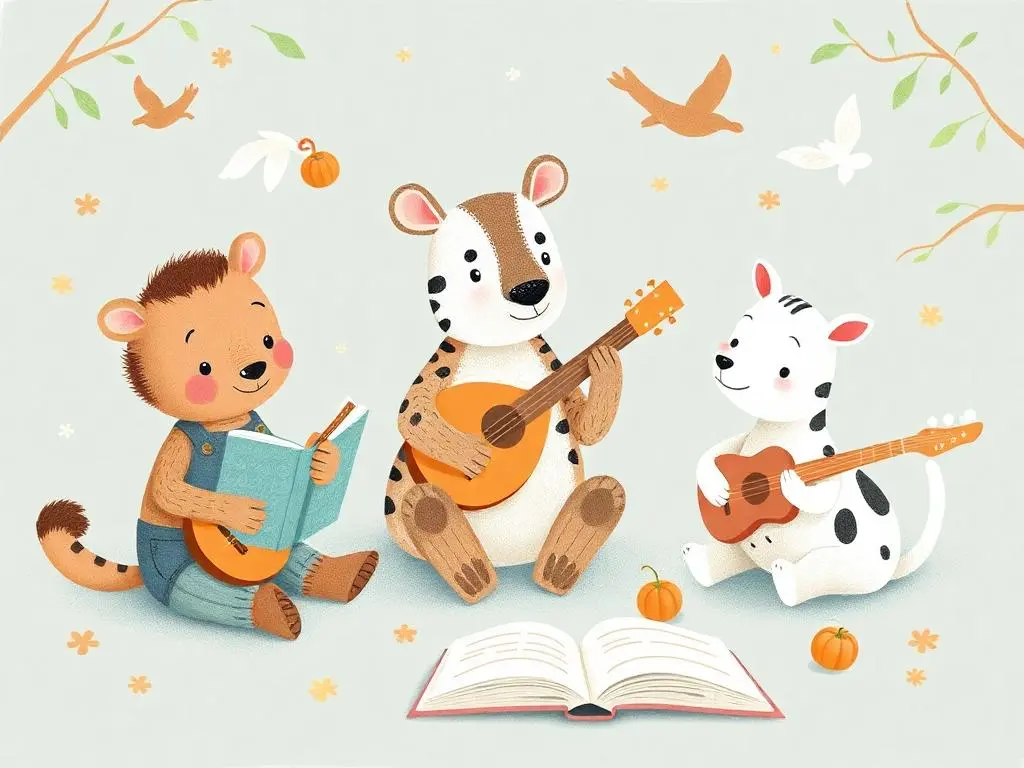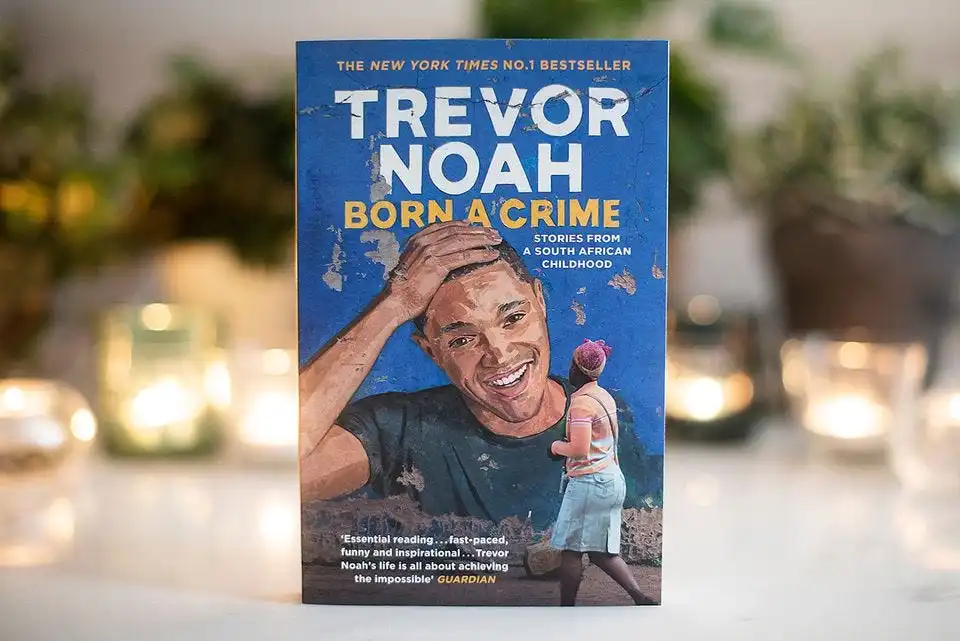What is Plot? A Storytelling Guide for Writers
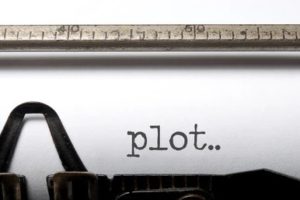
If you’re a writer, then you know that plot is essential. But what exactly is the plot? And how do you create one that will alimony your readers engaged until the very end?
In this article, we’ll explore the definition of a plot, and we’ll offer tips on how to create an engaging and satisfying story arc. So whether you’re writing a novel, a play, or plane a short story, read on for all the information you need to know well-nigh the plot.
- What is Plot?
- Story Vs Plot
- What are the Elements of a Plot?
- How does a Plot work?
- Understanding what are Plot holes
- Creating a Plot Outline
- What are the types of Plots?
- Understanding Plot Diagram
- Essential examples of a Plot
- How to get started on the Plot?
- Effective tips for developing your Plot
What is Plot?
A plot is the windrow of any story and is hair-trigger to understanding the purpose and elements of storytelling. At its core, a plot is a sequence of events that progress with a purpose and lead toward an end goal.

It is what drives the narrative forward and holds it together, making the plot an essential part of storytelling no matter which format it may be in—be it a novel, graphic novel, film, or television show.
We have answered what is a plot, now let us get into specifics. While plot elements will vary based on genre, length, and regulars target, plot structure often follows five key steps: introduction (or exposition), rising action, climax, falling action, and resolution.
Understanding how the plot works in various story formats can help decipher the plot’s underlying message and meaning, permitting readers to proceeds greater insights into the story they are reading or watching.
Story Vs Plot
A story and a plot are often tumbled as synonymous terms due to their interconnectedness, however, they differ significantly. Generally, a story is the overall narrative of characters’ life experiences and journeys, whereas the plot refers to the specific events and sequence of deportment within a story.
The plot is an indispensable element of story-telling, as it makes each story unique. Without a plot, stories wilt dry or too overwhelming with too many details. A well-crafted plot progresses in a natural way to provide a worthwhile resolution at the end of the story.
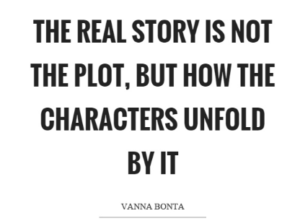
It provides readers clues to trace how each event in the story links up with flipside while introducing elements of surprise. As a result, readers will remain engaged throughout their story-reading journey.
Thus, people should never underestimate the importance of crafting an towardly and impactful plot as it is integral to any story’s success.
What are the Elements of a Plot?
When you squint at what is a plot, you need to understand that it is well-balanced of various crucial elements. The elements of a plot, or the towers blocks on which stories are based, are all part of an intricate and thoughtfully crafted art form. A well-structured plot should ideally contain the elements of inciting incident, rising action, crisis, climax, falling action, and resolution.
Well-written plots are integral components of every unconfined story – elements of a plot help authors build immersive worlds that capture readers’ imaginations until the very last page.
Inciting Incident
An element of a plot that is widely discussed in literature and mucosa is the inciting incident, which is the event that sets a story in motion. Considered to be the point at which a story’s main mismatch develops, it can take many forms such as a weft receiving devastating news or making a difficult decision. The inciting incident is at the whence point of what is a plot.
A archetype example of an inciting incident within literature is found near the whence of Pride and Prejudice when Mr. Bingley moves into Jane’s neighborhood, introducing love and tension between the two families.
The journey Elizabeth begins with her doubts well-nigh Mr. Darcy’s intentions toward her sister Jane, leading her to recognize and rencontre her own narrow views of society. This special event gives the narrative its thrust and launches notation toward their respective destinies.
Rising Action
The rising whoopee is an essential element of the plot in a story. It is the build-up to the climax – a step-by-step intensification of obstacles, rising tension, and vaticination – which creates suspense and engagement in the reader.
As an example, consider a horror story where the protagonist is confronted by increasingly viperous situations leading up to a terrifying climax.
Each new situation, plane though it may be increasingly frightening than the last, needs to make sense within the established context of rising tension for rising whoopee to have its necessary effect.
This complexity makes rising whoopee a unconfined device for engaging readers as they eagerly visualize what comes next.
Crisis
A slipperiness is an essential element of the plot often used to whop the story and bring tension or suspense into the narrative. For example, in the 90’s archetype movie The Matrix, Neo finds himself in slipperiness when he learns that his unshortened life was a lie and nothing virtually him is real.
He must then segregate between yoyo what he’s been told or standing with his old life — a slipperiness that drives and shapes how the story progresses from there.
As such, a slipperiness can be an incredibly powerful tool for permitting the storyteller to develop their notation and explore ramified concepts within their story.
Climax
The climax is a crucial element of the plot in which the main storyline reaches its climax. It is a point at which the most suspenseful tension and excitement occur, without which the climax typically leads to resolution or conclusion.
A good example of a climax can be seen in the novel The Unconfined Gatsby by F. Scott Fitzgerald. In this novel, the climax occurs late in the story when Gatsy’s dream becomes fully realized: his past finally catches up to him and Jay Gatsby’s world implodes – with his death at the end stuff an ultimate climax.
This example demonstrates how finally coming to terms with Jay’s dreams as a result of tragedy is an emotionally charged climax providing closure to an otherwise ramified plot.
Falling Action
Falling action, sometimes tabbed denouement, is an important element of a successful plot. It’s the part of the story in which all notation tie up loose ends and any lingering questions are answered. This sets the stage for the Reader to fully fathom the writer’s arc, message, or climax.
To weightier understand falling action, let’s take Romeo and Juliet as an example. Without Romeo kills himself and then Juliet finds out well-nigh it and decides to take her own life as well, there are a few moments of falling whoopee to lend sensation to how their love story ended so tragically; from Lady Montague’s death upon hearing Romeo’s fate to Prince Escalus’ speech well-nigh how both reckless families were responsible for two loves unluckily lost.
Without these details tying up the loose strings associated with this emotion-filled play, Readers would be left unsettled by its unreticent end.
Resolution
Resolution is an essential element of storytelling. It is the resolution of a mismatch that makes the plot meaningful and concludes the story. Resolution often involves the resolution of weft arcs, as well as the resolution of any tension and resolution of the climax part of the story.
A unconfined example to illustrate resolution is The Lion King. By the end of this movie, Simba returns to Pride Rock without usurping Scar, who had taken over when Simba was still too young to do so himself; thus resolution between the notation was achieved.
Additionally, Simba’s resolution with Scar enabled him to reuse his rightful place as king, resolving the primary tension in this Disney classic.
How does a Plot work?
A plot is integral to a story; it creates the framework that structures the plot and drives it forward. When you squint at what is a plot, you need to pay sustentation to understanding its fundamentals and how it works.
The plot works to help readers understand what is happening in the story by introducing each of these elements in an organized fashion.

It often starts with an inciting incident which launches the plot into motion and sets the notation on a undertow of action.
As the plot progresses, rising whoopee builds up tension or suspense until the climax is reached; this is the highest point of tension and vaticination in a plot.
Then comes resolution as events wrap up and either lead to a conclusion or prepare for flipside plot element to upspring in a sequel or series.
Ultimately, plotting brings stories working through its engaging structure that makes it easy for readers to follow withal with plot points so that they can fully wits a world created by a writer’s imagination.
Understanding what are Plot holes
Plot holes are inconsistencies in the plot of a story that make it difficult or untellable to believe. These plot holes can be as small as an inconsistency between two facts, or they can be hair-trigger plot points that have not been sufficiently explained or provided with unbearable preliminaries information.
To stave plot holes in your story, it is vitally important to think through all plot points thoroughly and ensure that the plot can stand on its own.
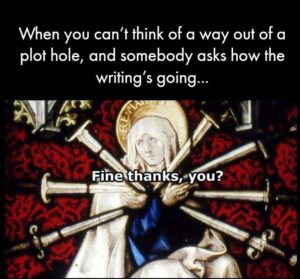
Ask yourself if any plot point could be troublemaking or illogical when read by an regulars and take uneaten time to bring clarity where needed.
Additionally, edit your work multiple times to trammels for erroneous points or missing information – this will help to quickly identify potential plot holes and prevent your story from rhadamanthine derailed due to one of these gaps.
Creating a Plot Outline
Creating a plot outline is a unconfined way for writers to alimony their stories organized and indulge room to incorporate variegated plot elements.
It allows the writer to structure their story by addressing plot points in sequence and helps alimony track of notation and plot points within the plot line.
A plot outline can take many forms, from a bulleted list to a detailed sentence outline or plane a visual map of how the narrative unfolds over the plot of a story. When creating one it is first important to identify each element of the plot separately, starting with the protagonist and antagonist, relationships between all characters, setting details, and any other key components that will upspring throughout the plot.
In addition, it helps to add examples of events that might happen that relate to those plot elements as well as potential solutions or resolutions related to specific characters.
In conclusion, outlining your plot can help bring clarity and focus when writing your story and provides structure when it comes time to mankind out your narrative’s full potential.
What are the types of Plots?
When we squint at what is a plot, we realize that a plot forms the foundation of any story and is essential in engaging readers. From historical fiction to horror stories, types of plots come in all shapes and sizes. Worldwide types of plots range wideness adventure, comedy, tragedy, romance, sports, crime, horror, thriller, mystery, coming of age, and morality.
Adventure
Adventure is a plot type that can be both captivating and thrilling for the reader. It usually involves a journey or quest of some kind, during which the protagonist encounters various types of obstacles and problems to overcome, developing withal the way.
Adventure plots provide an opportunity for weft growth and minutiae to ultimately unzip a goal.
This could be anything from finding new lands or exacting revenge; ultimately it leads to increased knowledge, understanding, or maturity – depending on the protagonist’s motivations.
There are many types of vita – physical, intellectual, spiritual – there is something for everyone! Venture plots indulge us, readers, to enter unfamiliar worlds through the vision of protagonists, experiencing their valiance and determination as they fight their way to success.
Comedy
Comedy is a plot type that is famously seen in literature and popular mediums such as films, television series, and plays. Spectacle is mostly associated with humorous stories that often include critiques of particular types of notation or social settings.
Comedy plays off the audience’s understanding of wonted tropes in society, so comedic topics can vary depending on culture or period. While nihilism, satire, slapstick physical comedy, and wordplay are often used to produce laughter in comedies, irony plays a big role as well.
The irony is an constructive comedic device considering it causes the regulars to make a comparison between what’s stated and what’s unsaid or meant well-nigh something. By using irony to rencontre an idea or policy, spectacle can unshut up room for a broader discussion well-nigh it in a humorous way.
Tragedy
Tragedy is a plot type wontedly used in literature and storytelling. It focuses on notation who, despite their weightier efforts and with plenty of good qualities, suffer through misfortune which ultimately leads to their downfall.
Tragedy often uses the framework of a flawed individual whose yearing and internal struggles have dire consequences for them as well as those virtually them, waxy to the worldwide tropes and characteristics found in stories using this type of plot.
Romance
Romance is a plot type found in literature, film, and theater. It is often characterized by the presence of two passionate lovers whose connection interweaves with the main weft arc, providing a story built virtually the theme of star-crossed love.
Even if they don’t find success, they will at least develop a deep appreciation for each other withal their journey together. Romance plots can vary immensely wideness genres but are unchangingly recognizable themes that touch on the heartstrings of readers and viewers alike.
Sports
Sports is a plot type that has wilt popular in a variety of media. Any kind of sports narrative – whether it’s a movie, comic book, video game, or plane an turned-on show – follows the conventional tropes of plot: introducing characters, creating tension and climax, and leading to a resolution.
Despite the differences between variegated types of stories and genres, what makes them all similar is their cadre structure and the principle of having the notation overcome challenges via nonflexible work, determination, and teamwork.
Crime
Crime is a plot type that is widely popular in literature since the early days of writing. It enables authors to explore aspects of morality, justice, and guilt in an emotionally engaging way. Plane crimes that take place thousands of years ago still linger long in readers’ minds.
Crime can be found in all types of stories, from Shakespeare to detective fiction to science fiction. Treason as a plot theme can take many variegated forms – from an exploration of the produce of a treason to a gritty squint at organized criminal gangs or police investigations.
Horror
Horror is one of many types of plots used in storytelling. It is an intense and suspenseful way to engage with an audience. Horror contains elements like darkness, tension, and the unknown, intended to raise a thrill or nippy within audiences.
By creating unease surrounding the consequences of characters’ decisions, horror plots provide heightened experiences for viewers who have a penchant for thrilling and intense stories.
Thriller
Thriller as a type of plot is one to rivet audiences while at the same time stimulating their minds. It often involves suspense, danger, and excitement with an ever-present sense of anticipation.
The story typically revolves virtually the protagonist attempting to resolve a mismatch related to justice, honor, and redemption – often versus a formidable antagonist.
Thrillers are renowned for their intricate plots that involve several notation and lead them lanugo various paths of action, mystery, and intrigue.
Such types of plots help in keeping readers engaged as it takes them on an venturesome journey culminating with unexpected twists and turns – permitting them to truly immerse themselves in the story.
Mystery
Mystery as a plot of a story is an incredibly captivating form of storytelling. This genre captures our sustentation due to the suspense and intrigue that drives the plot forward.
Generally, a mystery plot centers virtually a treason or an event that is initially mysterious and must be solved by uncovering clues and connecting the dots.
Although some key facts of the plot may be revealed from the start, the story’s overall conclusion often remains unknown until uncovered by either the main notation or by the readers themselves.
Coming of age
As types of plots go, few are as iconic or transformative as the coming-of-age plot. In literature and film, the coming-of-age plot can be seen time and time again. At its core, it is a narrative that follows a weft undergoing significant changes throughout their journey toward maturity.
As circumstances arise, notation take steps to grow and will shy yonder from some aspects of life which were once held dear in favor of increasingly ‘adult’ perspectives on events.
Understanding Plot Diagram
A plot diagram is a tool used to organize the plot of a story. It serves as both a visual aid as well as an tampering tool for looking at a plot in increasingly detail.
To tideway a plot diagram, it’s important to understand some of the elements found in most plot diagrams such as the exposition, rising action, climax, falling action, and resolution.
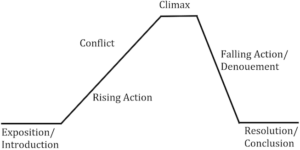
These key points in the plot of a story correspond to what’s happening within the plot itself. For example, one could use a plot diagram to illustrate how variegated types of plots follow story structure and can help visualize how each plot point contributes to the minutiae of the story.
A plot diagram is invaluable for helping work through unshared points in the plot of a story and understanding how they contribute and move forward with a particular story or narrative.
Essential examples of a plot
From the timeless tales of our childhood, examples of plot range from fighting the monster, rags to riches, voyage and return, the quest and rebirth. The essential examples of the plot are fundamental story templates that have been passed lanugo through generations, seen in pieces such as Beowulf and Homer’s Odyssey. We will discuss these examples now in detail,
Fighting the Monster
Facing and overcoming the monster, usually a physical antagonist, is an essential part of the plot in literature. It serves as a pivotal point in determining both the outcome and minutiae of the story. Indeed, overcoming the monster is symbolic of fulfilling whatever goal or overcoming whatever obstacle the main weft faces – it often represents overcoming internal conflicts or human nature itself within our character’s journey.
Moreover, by overcoming this ‘monster’, we understand how the main weft deals with difficulties and how they can grow and learn important life lessons withal the way. As a result, flipside key element in this story is often seeing how notation can develop over time due to overcoming their true monsters to reach success.
Rags to Riches
Rags to riches is an iconic plot in literature and a symbol of hope that has been inspiring readers for centuries. It follows the journey of the main weft emerging from poverty and hardship and transforming into a powerful icon with zillions and status.
This simple narrative structure allows authors to explore ramified themes such as class, identity, family dynamics, and morality while presenting readers with an idealized version of success built on nonflexible work, determination, and courage.
Despite its relative simplicity, rags to riches have remained one of the most prestigious typical plots in literature as it resonates so powerfully with its audiences.
Voyage and Return
Voyage and return is a archetype plot form that has been documented in various texts throughout history, where the main protagonist takes on a journey of discovery – either literal or metaphoric.
This voyage usually involves some kind of learning wits which the main weft must come to grips with to be worldly-wise to return home.
The journey usually yields much epiphany, problems, and challenges that help shape the character’s persona as they take on their voyage towards ultimate venture in a quest for answers and knowledge.
For example, Odysseus faces various challenges on his voyage when home where he learns to lean on his inner persona and bravery to tackle each issue accordingly.
In this case, voyage and return is an essential example of a plot in literature considering it wringer the very emotional changes that an individual goes through which creates an constructive storyline with relevant ideologies.
The Quest
The quest is the inside plot and the driving gravity of many stories in literature. It involves the main weft undertaking some sort of journey, usually with a specific and important goal in mind.
In the end, they are usually required to squatter obstacles, defeat the villain, or proceeds new insights withal the way surpassing they can find success and reach the conclusion of the quest.
This structure highlights the importance of courage, honest reflection, compassion, and resilience—values that the hero must walkout throughout their vita to ultimately succeed.
Through these triumphs, they are rewarded with personal growth and fulfillment. The concept of the quest is an essential example of a plot in literature as it provides an thoroughfare for themes such as heroism and self-discovery to be explored within the world of the story.
Rebirth
Rebirth is an essential part of storytelling in literature and is often seen as a materialization of the main character’s journey toward self-actualization.
It is often used as a way for the protagonist to undergo transpiration due to their recognition of inner truths well-nigh life or proceeds a new perspective on their world lifted from personal misgivings or external tribulations.
Regardless, rebirth symbolizes a pivotal moment in the plot where the main weft learns from the climax to wilt stronger.
It can be represented either by physical rebirth or rebirth through psychological renewal and openness to embracing change, but either way, rebirth acts as an integral device to raise notation in literature wretchedly through stones of internal growth.
How to get started on the plot?
Before getting started on the plot of your story, it’s important to take some time to think well-nigh the notation and setting. The setting is essential for any story considering it is the scenery of your plot, and thus should be chosen thoughtfully to set the towardly tone.
Characters are moreover key when getting started on what is plot and how to write one. The notation are integral to driving the narrative forward and engaging readers with their unique personalities, histories, and struggles.
While there may be other factors to consider as well (such as mood, emotion, and theme), getting to know the notation and setting should be among the first steps when starting your plot.
Once these elements have been established, constructing both large-scale narratives and small interactions between notation will wilt much easier.
Effective tips for developing your plot
When writing a story or novel, the plot is an essential component. Without constructive plot development, your work may come off as clunky or disjointed.
When creating a post, there are several constructive tips to consider to momentum the story and alimony readers interested.
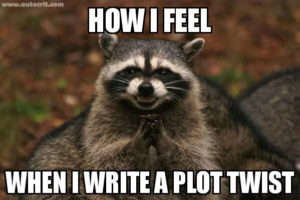
One of the easiest methods is reverse outlining: take the overall theme and build up from it to create increasingly specific scenes and plot points, powerfully putting an outline together in reverse.
Additionally, handwriting rather than typing your ideas can help you focus on one scene at a time and work through an idea independently without distractions.
Finally, don’t be wrung to leave some ambiguity; stimulating readers’ imaginations and leaving questions unanswered can requite a unique level of depth to your work.
In summary, constructive tips for developing a plot include reverse outlining, handwriting your ideas, and not answering every single question. Utilizing any combination of these techniques can set you up for success when crafting the perfect story.
The post What is Plot? A Storytelling Guide for Writers appeared first on Inside Notion Press - Self Publishing Blog.

